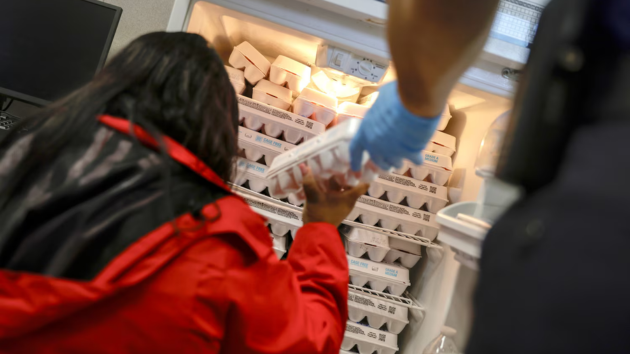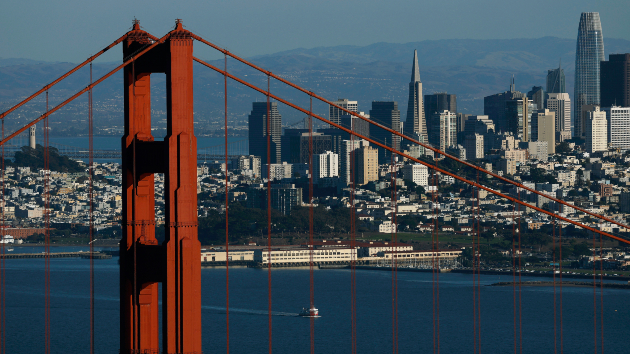Ten years after the Boston Marathon bombings, a community bears the psychological scars
Written by ABC Audio ALL RIGHTS RESERVED on April 14, 2023

(BOSTON) — There was no better place to watch the Boston Marathon than at the finish line on Boylston Street in Back Bay, according to Manya Chylinski, a resident of the neighborhood who has lived in Boston since the early 1990s.
“There were a couple years where I watched it from somewhere other than the finish line, and that was wonderful. But the finish line is just different. There’s just a different energy there. No surprise, that’s where people are ending this incredible accomplishment,” Chylinksi told ABC News.
On April 15, 2013, Chylinski was watching runners finish the 26.2-mile course when two terrorists planted pressure cooker bombs that exploded within seconds of each other, turning the celebratory scene into one of sheer panic and destruction.
Three people were killed — 8-year-old Martin Richard, 23-year-old Lingzi Lu and 29-year-old Krystle Campbell — and over 200 were wounded, including 17 people who lost limbs in the attack. In the following weeks and months, the emotional and psychological toll would surface among those who survived and responded to the devastating tragedy.
Ten years later, Chylinski said she can still remember standing frozen on the bleachers as the crowd across the street fled a cloud of smoke created by the first bomb. She and others were evacuating the bleachers when the second bomb went off less than a block away.
Chylinski said the frozen feeling returned when she could smell the acrid bomb smoke on her clothes during a conference call at work the next day. Suddenly she was back on the bleachers witnessing the bombing once again.
“I started to realize I didn’t know how to deal with what was happening to me,” Chylinski said.
Over the coming months, Chylinski said she struggled with intrusive thoughts, nightmares and debilitating anxiety that made it increasingly difficult to continue working and taking care of herself. She also said she felt stigmatized and minimized by others because she didn’t have any physical injuries. The experience was incredibly isolating.
“I felt like I didn’t have any right to be upset or complain or have these feelings,” Chylinski said.
She said she first sought counseling through her doctor’s office and later joined a support group for bombing survivors at Boston’s Beth Israel Deaconess Medical Center. Like Chylinski, many of the group’s attendees weren’t physically injured in the attack, but had classic symptoms of PTSD from being near the finish line when the bombs went off, said Katherine Manners, one of the therapists who led the support group.
The support group at Beth Israel was pivotal to Chylinski’s recovery, because she was finally able to see her experience reflected in others who were there that day. In turn, she felt less alone.
An estimated 19% to 25% of mass violence survivors will go on to develop PTSD, with symptoms ranging from intrusive thoughts and images, nightmares and other forms of severe distress, according to studies cited by Manners.
“The triggers are always sense based, so a number of the folks that were part of the group talked about the sound, you know, sudden loud sounds. So anything like a balloon popping or fireworks were very triggering for folks,” Manners said.
Other common symptoms include negative changes in thinking and mood, having an elevated emotional baseline, self-destructive behaviors and feelings of shame or guilt, she said.
For the race’s longtime medical coordinator Chris Troyanas, it was clear that many on his team of volunteers-turned-first responders also needed support in the aftermath of the attack. He organized an outreach program that included “debriefs” run by psychologists for people to talk about their experiences.
“I’ve said this publicly a couple of times: I’m not sure I was the right guy to help run this. I mean, I experienced it…but I kept saying to myself, ‘look, I’m my own Petri dish here.’ I know how I’m feeling. I know what I’m battling internally at home and whatever so, all right, I’ve gotta just address it for the masses as if it was just for me,” Troyanas said.
When the bombs went off, Troyanas left the large medical tent on Dartmouth Street and joined a group of first responders removing the fencing from the sidewalk to get to the injured people on the other side. Bystanders took off their belts and got T-shirts from a nearby store to use as makeshift tourniquets to stop the wounded from bleeding out.
There was no time to think, he said — just act.
“There [were] people yelling, screaming and crying and [there was] the uncertainty of what’s going on. You know, you are walking through basically pools of blood and over body parts. I kept saying to myself, OK, do I pick that up? Do I find the person it belongs to? And immediately I’m going, ‘No, you gotta stop someone’s bleeding. That’s the main thing,’” he said.
“I usually don’t talk about it, but I didn’t let myself deal with it until after the next marathon. I couldn’t. I had to focus on helping my fellow volunteers and our runners and the BAA and I never let myself emotionally deal with it,” Troyanas said.
Back in the medical tent, physical therapist Irene Davis had been volunteering alongside her husband, a retired Special Forces veteran with the U.S. Army, to treat runners with exertional heatstroke when the bombs went off.
The tent turned into a triage center where victims were treated and categorized for transport to the hospital based on the severity of their injuries, Davis said.
One of the survivors Davis treated was Michelle Blackburn, a spectator who was watching her best friend Erin run the marathon alongside Erin’s boyfriend, Jeff Baum, a survivor who lost both of his legs in the attack. Blackburn’s Achilles tendon was blown out of place and she ended up losing part of her leg.
“My husband and I had a daughter her age, so, you know, it just kind of pulls at your heartstrings. And she was asking about her friends, like, she was really feeling bad that the friend that she was there to watch run was gonna feel bad about her getting hurt,” Davis said.
Davis offered to call Blackburn’s mom and left a message saying her daughter was OK and was about to be taken to the hospital for treatment. Blackburn stayed in touch with the couple, who she calls her “fairy godparents,” Davis said.
“I remember what were most haunting to me were the faces of the people coming through the tent who had been injured. They were being wheeled through, they had to go through the tent to the ambulances in the back, and they were just, you know, their faces were ashen, and they were just in shock. That to me was so horrible to see,” Davis said.
Chylinski went on to become what she calls an “accidental activist” to raise awareness about the importance of paying attention to mental health wounds after mass tragedies. She started giving talks about what she experienced to first responder organizations and emergency managers, and reached out to her local officials, including Rep. Ayanna Pressley.
With Chylinski’s help, Pressley introduced the Post-Disaster Mental Health Response Act, which was signed into law by President Joe Biden at the end of last year. The bicameral legislation will “expand mental health support for survivors of natural disasters and terrorist attacks that are designated emergency declarations by FEMA,” according to a press release from Pressley’s office.
“I kept knocking on doors and I made a phone call. And now there’s a new law that’s going to help people,” Chylinski said.
Copyright © 2023, ABC Audio. All rights reserved.
 KVSP
KVSP 




